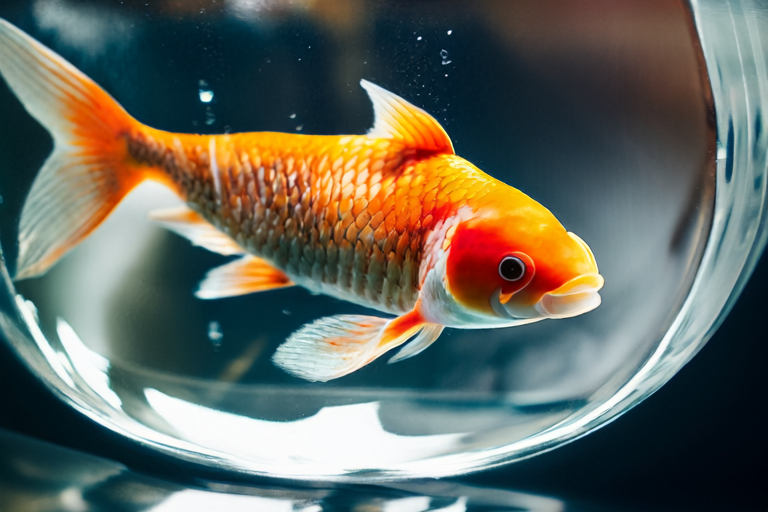How to Keep Your Goldfish Healthy and Happy
Goldfish are one of the most popular pets worldwide due to their vibrant colors and relatively low maintenance requirements. However, to ensure your goldfish lives a long, healthy, and happy life, it’s important to provide them with the right environment and care. This article will guide you through the essential steps to keep your goldfish thriving, covering topics such as proper tank setup, diet, regular maintenance, common health issues, and enrichment activities.
Proper Tank Setup
The first step in keeping your goldfish healthy is setting up the right tank. Many people believe that goldfish can live happily in small bowls, but this is far from true. Goldfish produce a significant amount of waste, and a small tank can quickly become polluted, leading to health problems. A general rule of thumb is that each goldfish requires at least 20 gallons of water. For example, two goldfish should have a tank of around 40 gallons.
Filtration is another crucial element of a healthy goldfish tank. Filtration helps remove waste, uneaten food, and harmful chemicals from the water, ensuring it remains clean and safe for your fish. Choose a filter that matches the size of your tank and provides adequate flow rate and biofiltration capacity. Regularly clean or replace filter media to maintain its effectiveness.
Water conditions also play a vital role in your goldfish’s health. Goldfish prefer cooler water temperatures, ideally between 68°F and 74°F (20°C to 23°C). They are cold-water fish and do not require heating. Maintaining a stable pH level between 6.5 and 8.0 is also important. Test the water regularly using a reliable test kit to monitor parameters such as ammonia, nitrite, and nitrate levels. Ammonia and nitrite should always be at zero, while nitrate should be kept below 40 ppm. Perform partial water changes as needed to keep these levels in check.
Diet
Feeding your goldfish a balanced diet is essential for their overall health. Goldfish are omnivores, meaning they eat both plant-based and animal-based foods. A high-quality flake or pellet food formulated specifically for goldfish is a good base for their diet. These foods provide necessary nutrients and are easy to digest.
In addition to commercial foods, you can offer your goldfish occasional treats like blanched vegetables (such as zucchini or peas) and live or frozen foods like brine shrimp or bloodworms. Variety in their diet ensures they receive all the nutrients they need. However, avoid overfeeding, as excess food can pollute the water and cause digestive issues. Feed your goldfish only what they can consume within a few minutes, once or twice a day.
Regular Maintenance
Consistent maintenance is key to keeping your goldfish tank clean and healthy. Regular water changes are essential to remove accumulated toxins and maintain optimal water quality. Aim to change about 20-30% of the tank water weekly. When performing water changes, use a gravel vacuum to clean the substrate and remove any debris. Be sure to treat the new water with a dechlorinator before adding it to the tank to neutralize harmful chlorine and chloramines.
Cleaning the tank and equipment is equally important. Clean the glass walls of the tank to prevent algae growth, which can compete with your goldfish for oxygen. Rinse the filter media regularly to keep the filter functioning properly. Inspect the heater, if applicable, and ensure it is working correctly. Regular maintenance will help prevent many common health issues and ensure your goldfish remain comfortable in their environment.
Common Health Issues
Despite your best efforts, goldfish can still experience health problems. Some common issues include fin rot, dropsy, ich, and swim bladder disorder. Fin rot is characterized by frayed or discolored fins and is often caused by poor water quality or bacterial infections. Dropsy is a condition where the fish’s abdomen swells due to fluid retention, usually caused by a bacterial infection. Ich, also known as white spot disease, presents as tiny white spots on the fish’s body and is caused by a parasite.
Swim bladder disorder affects the fish’s ability to control its buoyancy, causing it to float upside down or sink to the bottom of the tank. The exact cause is often unknown but may be related to genetics, overfeeding, or physical trauma. If you notice any signs of illness in your goldfish, consult a veterinarian specializing in aquatic animals for proper diagnosis and treatment. Early intervention can significantly improve your fish’s chances of recovery.
Enrichment Activities
While goldfish may not be as active as some other pets, providing them with enrichment activities can enhance their well-being. Incorporating plants, caves, and decorations into the tank creates hiding spots and adds visual interest. Floating plants or artificial plants can also provide stimulation and mimic natural environments. Rotate decorations occasionally to keep the tank interesting and reduce boredom.
Introducing gentle water movement can encourage swimming and exercise. Consider adding a powerhead or air pump to create currents in the tank. Additionally, offering different types of food or feeding in various locations can stimulate your goldfish’s natural foraging behavior. Enrichment activities not only make your goldfish happier but also contribute to their mental and physical health.
Conclusion
By following these essential care tips, you can ensure your goldfish lead healthy and happy lives. Proper tank setup, a balanced diet, regular maintenance, addressing common health issues, and providing enrichment activities are all critical factors in maintaining your goldfish’s well-being. With the right care, your goldfish can thrive in their environment and bring joy to your home for years to come.
